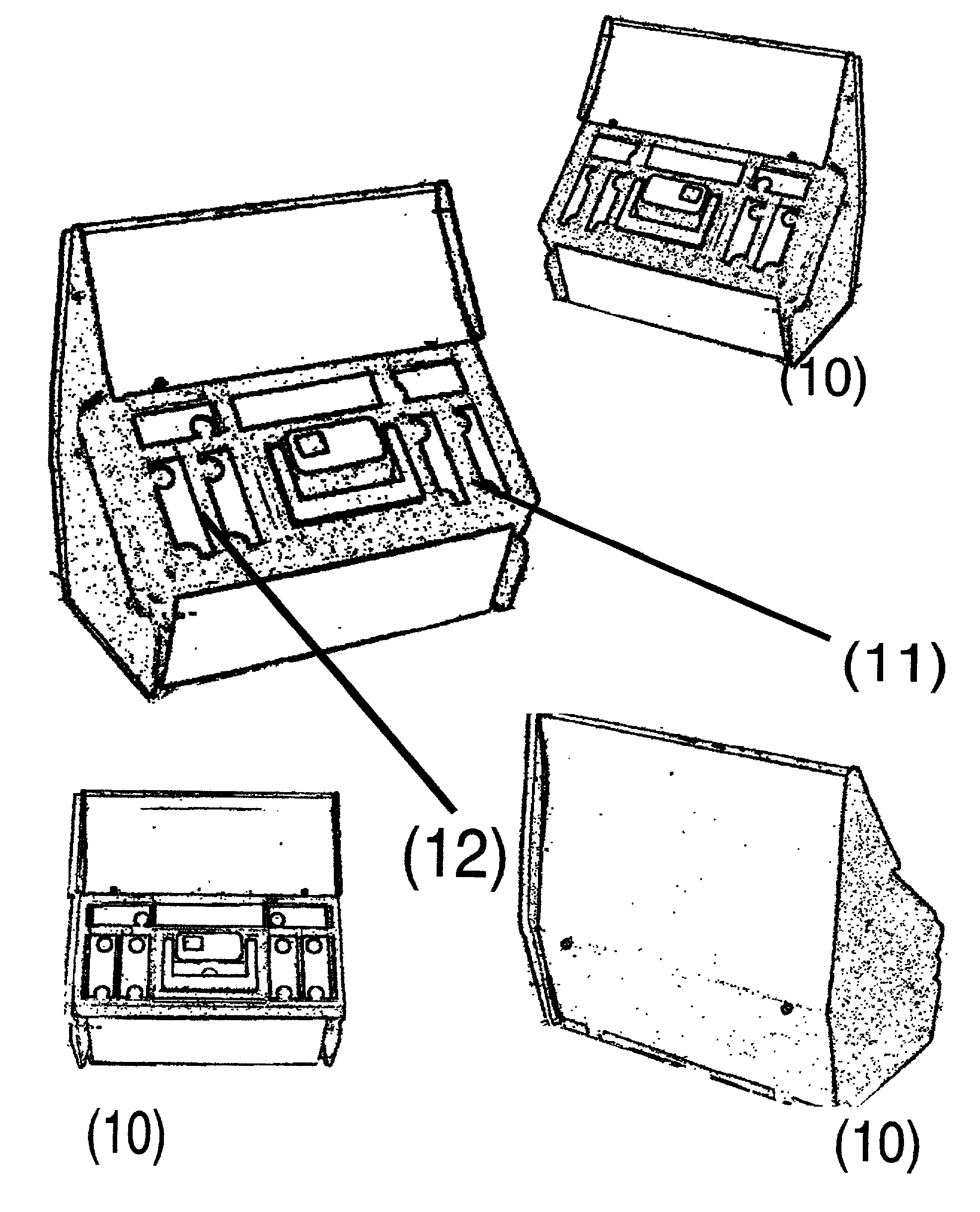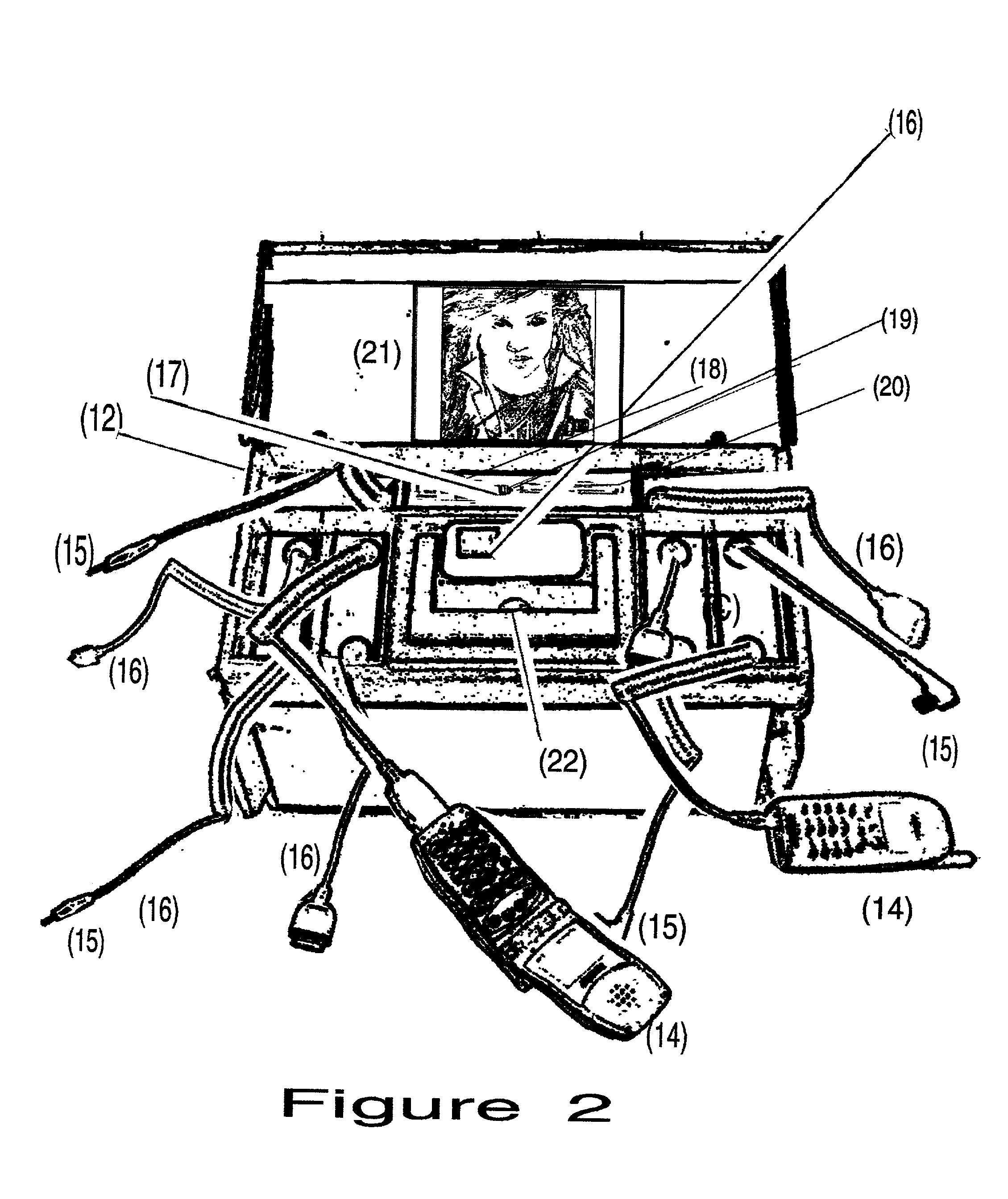Method of distributing widespread portable emergency cellular power and e-911 assistance
- Summary
- Abstract
- Description
- Claims
- Application Information
AI Technical Summary
Benefits of technology
Problems solved by technology
Method used
Image
Examples
Embodiment Construction
[0191] Inherent in the design of the invention itself are the qualities the enable is use in many other types of situations and embodiments. For instance units can be installed in airplanes, busses, trains, subways, taxi cabs, limousines, or at amusement parks or movie theaters wherein they can be located in lockers and locked up while the person enjoys the park or the movie and when he comes back his phone is charged without risk of theft. Various housings for the unit can be envisioned including shapes of football helmets or beer cans to house the unit for marketing reasons. However it is has been encased, it's purpose and the need it fills, will still be a vital one for society within the framework of the reasons already cited. In some instances, the invention may utilize a card swipe or other method of payment which could be collected at the discretion of the owner of the charging unit at that particular location. However, inherent in the design is the remote billboard feature t...
PUM
 Login to View More
Login to View More Abstract
Description
Claims
Application Information
 Login to View More
Login to View More - R&D
- Intellectual Property
- Life Sciences
- Materials
- Tech Scout
- Unparalleled Data Quality
- Higher Quality Content
- 60% Fewer Hallucinations
Browse by: Latest US Patents, China's latest patents, Technical Efficacy Thesaurus, Application Domain, Technology Topic, Popular Technical Reports.
© 2025 PatSnap. All rights reserved.Legal|Privacy policy|Modern Slavery Act Transparency Statement|Sitemap|About US| Contact US: help@patsnap.com



